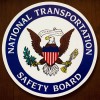Our Mission: Independently Advancing Transportation Safety
Legislative Mandate
Maintaining our congressionally mandated independence and objectivity;
Conducting objective, precise accident investigations and safety studies;
Performing fair and objective airman and mariner certification appeals;
Advocating and promoting safety recommendation;
Assisting victims of transportation accidents and their families.
The National Transportation Safety Board is an independent Federal agency charged by Congress with investigating every civil aviation accident the United States and significant accidents in other modes of transportation – railroad, highway, marine and pipeline. The NTSB determines the probable cause of the accidents and issues safety recommendations aimed at preventing future accidents. In addition, the NTSB carries out special studies concerning transportation safety and coordinates the resources of the Federal Government and other organizations to provide assistance to victims and their family members impacted by major transportation disasters.
The NTSB has five Board Members, each nominated by the President and confirmed by the Senate to serve 5-year terms. A Member is designated by the President as Chairman and another as Vice Chairman for 2-year terms. The Chairmanship requires separate Senate confirmation. When there is no designated Chairman, the Vice Chairman serves as Acting Chairman.
History of The National Transportation Safety Board
The NTSB originated in the Air Commerce Act of 1926, in which the U.S. Congress charged the U.S. Department of Commerce with investigating the causes of aircraft accidents. Later, that responsibility was given to the Civil Aeronautics Board’s Bureau of Aviation Safety, when it was created in 1940.
In 1967, Congress consolidated all transportation agencies into a new U.S. Department of Transportation (DOT) and established the NTSB as an independent agency placed within the DOT for administrative purposes. In creating the NTSB, Congress envisioned that a single organization with a clearly defined mission could more effectively promote a higher level of safety in the transportation system than the individual modal agencies working separately. Since 1967, the NTSB has investigated accidents in the aviation, highway, marine, pipeline, and railroad modes, as well as accidents related to the transportation of hazardous materials.
In 1974, Congress reestablished the NTSB as a completely separate entity, outside the DOT, reasoning that ” …No federal agency can properly perform such (investigatory) functions unless it is totally separate and independent from any other … agency of the United States. ” Because the DOT has broad operational and regulatory responsibilities that affect the safety, adequacy, and efficiency of the transportation system, and transportation accidents may suggest deficiencies in that system, the NTSB’s independence was deemed necessary for proper oversight. The NTSB, which has no authority to regulate, fund, or be directly involved in the operation of any mode of transportation, conducts investigations and makes recommendations from an objective viewpoint.
In 1996, Congress assigned the NTSB the additional responsibility of coordinating Federal assistance to families of aviation accident victims. While originally legislated to provide assistance following major aviation accidents, the program has expanded to provide assistance in all modes of transportation on a case-by-case basis.
In 2000, the agency embarked on a major initiative to increase employee technical skills and make our investigative expertise more widely available to the transportation community by establishing the NTSB Academy. The George Washington University Virginia campus was selected as the Academy’s home. The NTSB took occupancy of the new facility in August 2003. On October 1, 2006, the name of the NTSB Academy was changed to the NTSB Training Center to better reflect the internal training mission of the facility.
Since its inception, the NTSB has investigated more than 132,000 aviation accidents and thousands of surface transportation accidents. On call 24 hours a day, 365 days a year, NTSB investigators travel throughout the country and to every corner of the world to investigate significant accidents and develop factual records and safety recommendations with one aim—to ensure that such accidents never happen again. The NTSB’s Most Wanted List of Transportation Safety Improvements highlights safety-critical actions that DOT modal administrations, the USCG, and others need to take to help prevent accidents and save lives.
To date, the NTSB has issued over 13,000 safety recommendations to more than 2,500 recipients. Because the NTSB has no formal authority to regulate the transportation industry, our effectiveness depends on our reputation for conducting thorough, accurate, and independent investigations and for producing timely, well-considered recommendations to enhance transportation safety.
NTSB Strategic and Action Plans
· Strategic Plan 2013-2016 [PDF ]
· Strategic Human Capital Plan FY2011-2016
· Information Technology Strategic Plan 2010-2015
Chief Financial Officer Reports





